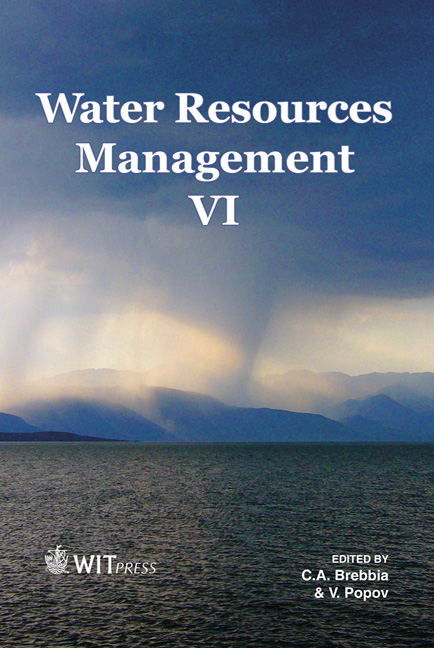Removal And Recovery Of Ni, Cu And Fe From Heavy Metal Effluent By Reduction Crystallization
Price
Free (open access)
Transaction
Volume
145
Pages
10
Page Range
681 - 690
Published
2011
Size
692 kb
Paper DOI
10.2495/WRM110611
Copyright
WIT Press
Author(s)
T. P. Phetla, F. Ntuli & E. Muzenda
Abstract
Due to the fast depletion of water reserves globally, the toxicity of heavy metals and the negative impact posed to the environment; the current focus in wastewater treatment is now on the removal and re-use of these heavy metals rather than removal and disposal in landfills. This study investigated the use of hydrazine as a reducing agent to remove and recover Ni, Cu and Fe from wastewater by reduction crystallization. Feasibility studies were carried out to test the efficiency and find the optimum operating conditions for this method and generate an understanding of the chemical and particulate process occurring. The experiments were conducted on a 20L batch reactor using synthetic solutions containing a mixture of nickel, copper and iron. The results show that hydrazine can recover and crystallize Ni, Cu and Fe into their elemental form: 99.30% Ni was removed from the Ni-solution, 99.26% Ni and 98.81% Cu were removed from the Ni-Cu solution, over 99.90% Ni and 97.70% Fe were removed from the Ni-Fe solution. Evolution of the PSD revealed that breakage and molecular growth were the predominant particulate processes occurring, a finding which was validated by the scanning electron micrographs of the powder obtained. Keywords: metal powder, electroless plating, reduction crystallization, chemical reduction, reducing agent. 1 Introduction Heavy metal contaminated wastewater produced by acid mine drainage and mineral processing occurs at estimated 70% of world’s mine sites, which makes it one of the mining industry’s most significant environmental and financial
Keywords
metal powder, electroless plating, reduction crystallization, chemical reduction, reducing agent





